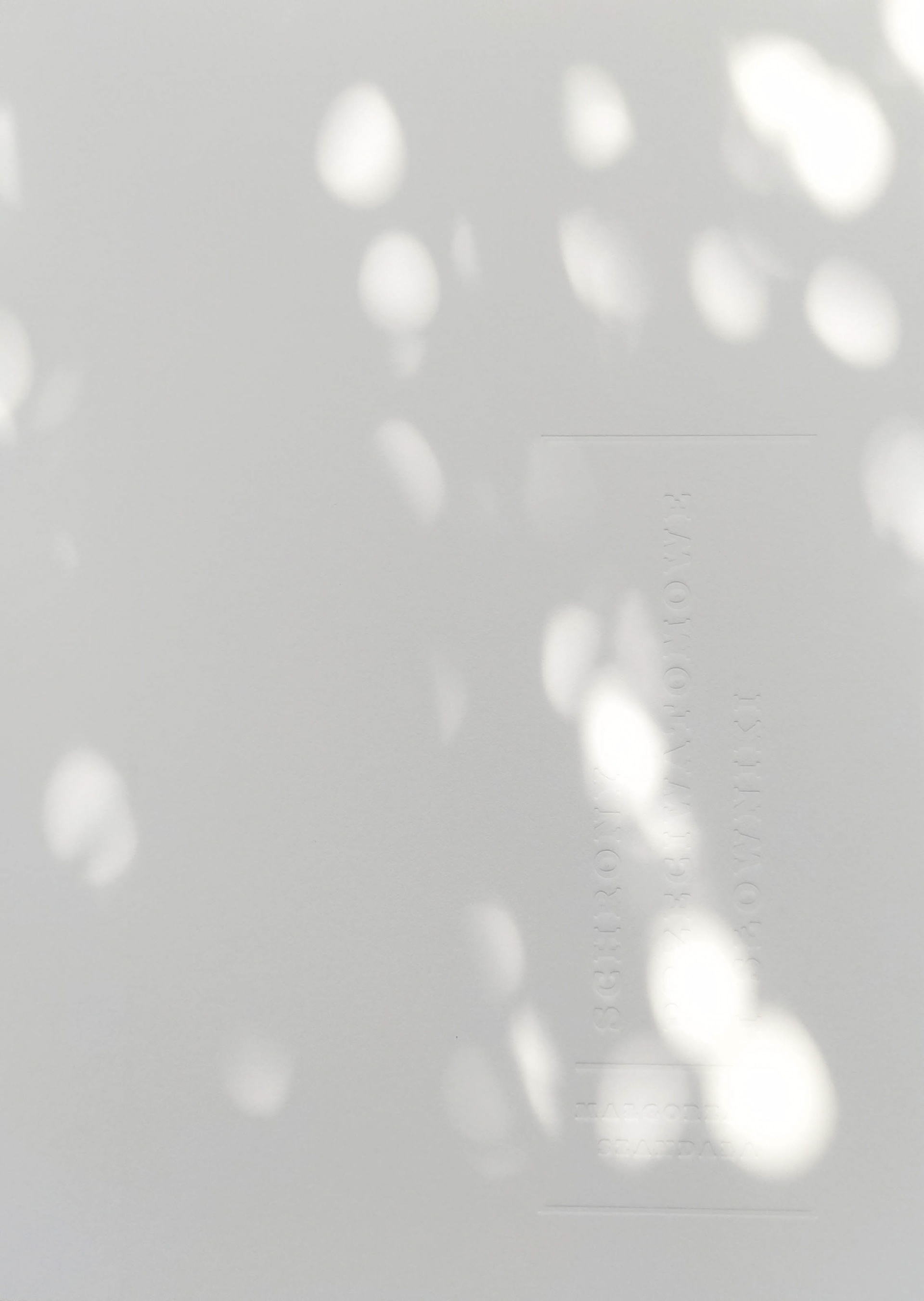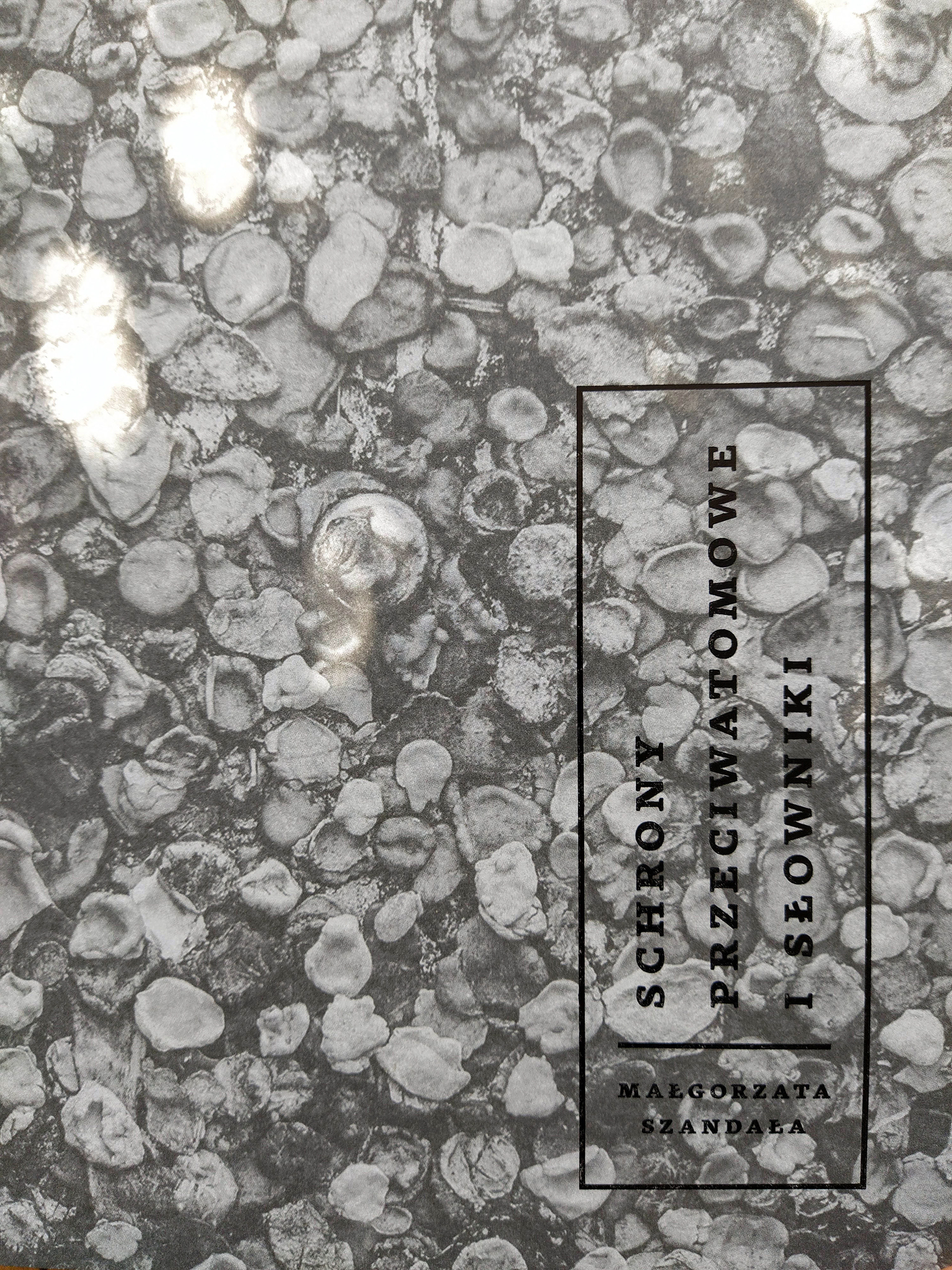


„(...) wielowątkowy (niczym deleuzjańskie kłącze) esej rozpisany na dwadzieścia części (rozdziałów), uporządkowanych «malejąco» (wpierw kluczowe rozdziały, następnie uzupełniające i dygresyjne, wreszcie «osobliwości»). Jej fundament teoretyczny opiera się na trzech kanonicznych tekstach: Of Other Spaces: Utopias and Heterotopias Michela Foucault, Walczące słowa Judith Butler i Bunker Archeology Paula Virilio (...). Głównym założeniem publikacji jest ukazanie kluczowej roli, jaką dla zrozumienia dynamicznych procesów zachodzących w świecie stanowi połączenie trzech elementów: przestrzeni, języka oraz ciała, umieszczonych w sytuacji granicznej (liminalnej), jaka powstaje w wyniku zaistnienia czwartego, katalizującego czynnika – przemocy (lub stanu ekstremalnego). Autorka, opisując główne parametry wyjściowe, wprowadza pojęcia heterotopii oraz metalepsji – jako najskuteczniejsze figury pozwalające zrozumieć (a wcześniej opisać) «prawdę o rzeczywistości». Sięga więc do filozofii, architektury, nauk społecznych, faktów historycznych, historii sztuki i wybranych mitów, aby wykazać «heterotopiczny» charakter naszej rzeczywistości i «metaleptyczny» sposób jej doświadczania (metalepsja jako metoda pracy z przestrzenią i czasem). Wtargnięcie, naruszenie, przesunięcie, zamiana, kamuflaż itp. – wszystkie te operacje zostawiają swój ślad: ślad pamięci, osad historii, traumę.”
Grzegorz Sztwiertnia
Autorka: Małgorzata Szandała | Wydawca: Akademia Sztuk Pięknych w Katowicach | Współwydawca: CSW Kronika | Projekt graficzny, skład, łamanie: Daria Malicka | ISBN: 978-83-65825-11-7
[EN]
[EN]
Concept
The subject stems from my longstanding interest in space and the attempts to figure out what it is and how it works. First of all I was curious how language as a tool (understood as a system of signs) can be employed to describe space. For many years prior to this work I was making attempts to tackle this problem with means traditionally ascribed to the artist. However, the available artistic tools, rooted in their history turned out to be insufficient, too limiting, or even powerless. Nevertheless, space and language are still one of the two pillars of my interests, in their more abstract and conceptual aspect. The second, more significant pillar of my work, is, generally speaking, space and time in which we live, history, events, circumstances, traces of the past, namely, everything which creates concrete contexts that affect us at present. They shape our so-called reality, i.e. our concepts – language, our space and our bodies emerged in it. The concept of heterotopia, elaborated by Michel Foucault, became key for my further work. I came to a conclusion that in order to be able to fully discuss the topics of my concern three elements need to be combined: space, language and body. However, this combination needs one more catalytic factor in order to become operational and performative, that is, for the fusion to really take place. I believe that the effect of violence is the catalyst I have been looking for.
Therefore the subject-matter of war, conflict or, more generally, state of alarm, enters the area of my research. War is a total phenomenon, probably unlike any other, encompassing the whole life with all its aspects. It covers the entire reality, and, consequently, the whole language (war language is, after all, performative, such as for example the act of declaring war), it affects the body and annexes space: air, water, ground, the invisible space of information. In the linguistic research I am not interested in a direct description, e.g. a report on events, but in a different type of messages. What is more, during my research I realised what kind of tool was in fact language and the narration it created. How close were facts and fiction. Often there are no tools to decide what is the former and what is the latter, when both work in the same way. This is when the problem gets more complicated, but at the same time becoming more intriguing and complex. As a consequence, my work required the use of many different tools. They include essays, which I write to analyse specific cases, test theories, combine phenomena, sometimes quite distant, and to look for meanings through the combinations. The essays provide the bottom line for the second type of my activities – site-specific actions, and they legitimise them.
The idea that only the experience of some kind of violence, or an intense experience of ecstasy (as described by Butler in Precarious Life. The Powers of Mourning and Violence.) is a hidden thesis of the present work. Only the experience of being put “out of control” – the disintegration of the world and the previously stable structure – make it possible for us to get in touch with reality. In an ordinary state this contact seems to be obscured with the abundance of different texts, by narrations which separate us from reality or by the everyday routine. To continue in the same vein, any knowledge drawn from heterotopia can provide us with the “truth about reality.” Through contestation, reversal, reflection, reinforcement or accumulation, heterotopia presents the features of space and world that are otherwise invisible. My direct argument is that when a combination of elements – language, space and body – becomes a heterotopia, our contact with reality, that is, experience, is absolute and active. Through mind – language, logos and through our biological body. The prerequisite for the combination to occur is the catalysing element of violence. All this takes place in particular spaces, on particular bodies and it also acts through language (e.g. hate speech, but not exclusively).
I also argue that there are spaces which preserve this state within themselves. One of such spaces with this type of extraordinary potential is the fallout shelter from the title of the project. A fallout shelter, discussed not in its capacity of a building, but of space, is a time, information and history capsule. Moreover, it has a specific impact on the body inside it, providing shelter and being at the same time oppressive. A fallout shelter is therefore also a space of coexisting contradictions. In the course of my work I analyse such cases and I look for features of a fallout shelter in completely different spaces and phenomena.
Małgorzata Szandała
Translation from Polish into English by Ola Żabicka
The subject stems from my longstanding interest in space and the attempts to figure out what it is and how it works. First of all I was curious how language as a tool (understood as a system of signs) can be employed to describe space. For many years prior to this work I was making attempts to tackle this problem with means traditionally ascribed to the artist. However, the available artistic tools, rooted in their history turned out to be insufficient, too limiting, or even powerless. Nevertheless, space and language are still one of the two pillars of my interests, in their more abstract and conceptual aspect. The second, more significant pillar of my work, is, generally speaking, space and time in which we live, history, events, circumstances, traces of the past, namely, everything which creates concrete contexts that affect us at present. They shape our so-called reality, i.e. our concepts – language, our space and our bodies emerged in it. The concept of heterotopia, elaborated by Michel Foucault, became key for my further work. I came to a conclusion that in order to be able to fully discuss the topics of my concern three elements need to be combined: space, language and body. However, this combination needs one more catalytic factor in order to become operational and performative, that is, for the fusion to really take place. I believe that the effect of violence is the catalyst I have been looking for.
Therefore the subject-matter of war, conflict or, more generally, state of alarm, enters the area of my research. War is a total phenomenon, probably unlike any other, encompassing the whole life with all its aspects. It covers the entire reality, and, consequently, the whole language (war language is, after all, performative, such as for example the act of declaring war), it affects the body and annexes space: air, water, ground, the invisible space of information. In the linguistic research I am not interested in a direct description, e.g. a report on events, but in a different type of messages. What is more, during my research I realised what kind of tool was in fact language and the narration it created. How close were facts and fiction. Often there are no tools to decide what is the former and what is the latter, when both work in the same way. This is when the problem gets more complicated, but at the same time becoming more intriguing and complex. As a consequence, my work required the use of many different tools. They include essays, which I write to analyse specific cases, test theories, combine phenomena, sometimes quite distant, and to look for meanings through the combinations. The essays provide the bottom line for the second type of my activities – site-specific actions, and they legitimise them.
The idea that only the experience of some kind of violence, or an intense experience of ecstasy (as described by Butler in Precarious Life. The Powers of Mourning and Violence.) is a hidden thesis of the present work. Only the experience of being put “out of control” – the disintegration of the world and the previously stable structure – make it possible for us to get in touch with reality. In an ordinary state this contact seems to be obscured with the abundance of different texts, by narrations which separate us from reality or by the everyday routine. To continue in the same vein, any knowledge drawn from heterotopia can provide us with the “truth about reality.” Through contestation, reversal, reflection, reinforcement or accumulation, heterotopia presents the features of space and world that are otherwise invisible. My direct argument is that when a combination of elements – language, space and body – becomes a heterotopia, our contact with reality, that is, experience, is absolute and active. Through mind – language, logos and through our biological body. The prerequisite for the combination to occur is the catalysing element of violence. All this takes place in particular spaces, on particular bodies and it also acts through language (e.g. hate speech, but not exclusively).
I also argue that there are spaces which preserve this state within themselves. One of such spaces with this type of extraordinary potential is the fallout shelter from the title of the project. A fallout shelter, discussed not in its capacity of a building, but of space, is a time, information and history capsule. Moreover, it has a specific impact on the body inside it, providing shelter and being at the same time oppressive. A fallout shelter is therefore also a space of coexisting contradictions. In the course of my work I analyse such cases and I look for features of a fallout shelter in completely different spaces and phenomena.
Małgorzata Szandała
Translation from Polish into English by Ola Żabicka